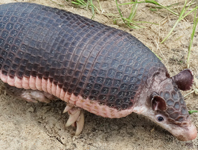Abstract
The Hygrobates fluviatilis-complex includes the following ten species:H. fluviatilis (Ström, 1768), H.arenarius Smit & Pešić, 2017, H.corsicus Pešić& Smit, 2017, H. marezaensis Pešić & Dabert, 2017,H. turcicus Pešić, Esen & Dabert, 2017, H. persicus Pešić &Asadi, 2017, H. grabowskii Pešić, Saboori, Zawal & Dabert, 2019,H. ulii Pešić, Saboori, Zawal & Dabert, 2019, H. balcanicus Pešić, 2020 and H. mediterraneus Pešić, 2020 (Pešić et al. 2017, 2019, 2020, respectively).This paper gives the description of one further new species of the genus, based on material collected by the author in running waters of the European part of Russia. The material was sampled with a hand net with 250 μm mesh side. Specimens were not fixed in Koenike liquid, but slides were made from fresh material. Idiosomal setae are named according to Tuzovskij (1987). The following abbreviations are used: H—height, L—length; ml—medial length, n—number of specimens measured; P-1-5, pedipalp segments (trochanter, femur, genu, tibia and tarsus); W—width; I-IV-Leg-1–6, first leg, segments 1–6 (trochanter, basifemur, telofemur, genu, tibia and tarsus) i.e. III-Leg-3 = genu of third leg.All measurements are given in micrometers(μm), length of appendage segments is given as dorsal length. The type material is deposited in the collection of the Papanin Institute for Biology of Inland Waters (Borok, Russia).
References
Pešić, V., Asadi, M., Cimpean, M., Dabert, M., Esen, Y., Gerecke, R., Martin, P., Savić, A., Smit, H. & Stur, E. (2017) Six species in one: Evidence of cryptic speciation in the Hygrobates fluviatilis complex (Acariformes, Hydrachnidia, Hygrobatidae). Systematic & Applied Acarology, 22, 1327–1377.
https://doi.org/10.11158/saa.22.9.4
Pešić, V., Saboori, A., Zawal, A. & Dabert, M. (2019) Hidden but not enough: DNA barcodes reveal two new species in Hygrobates fluviatilis complex from Iran (Acariformes, Hydrachnidia, Hygrobatidae). Systematic & Applied Acarology, 24 (12), 2439–2459.
https://doi.org/10.11158/saa.24.12.11
Pešić, V., Jovanović, M., Manović, A., Zawal, A., Bańkowska, A., Lyubomirova, L., Karaouzas, Iu. & Dabert, M. (2020) Molecular evidence for two new species of the Hygrobates fluviatilis-complex from the Balkan Peninsula (Acariformes, Hydrachnidia, Hygrobatidae). Systematic & Applied Acarology, 25 (9), 1702–1719.
https://doi.org/10.11158/saa.25.9.15
Tuzovskij, P.V.(1987) Morfologiya i postembrional’noe razvitiye vodyanykh kleshchej [Morphology and Postembryonic Development in Water Mites]. Nauka Publ., Moscow, 172 pp. [in Russian]


